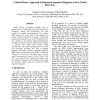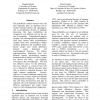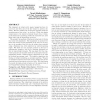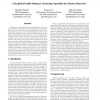3946 search results - page 9 / 790 » The computational complexity of choice sets |
DCC
2002
IEEE
14 years 9 months ago
2002
IEEE
We show that the problem of optimal bit allocation among a set of independent discrete quantizers given a budget constraint is equivalent to the multiple choice knapsack problem (...
EDOC
2008
IEEE
13 years 11 months ago
2008
IEEE
Model Driven Development (MDD) aims to promote the role of modeling in Software Engineering. Enterprise systems and architectures are often modeled via multiple representations. F...
ACL
1998
13 years 11 months ago
1998
The probabilistic relation between verbs and their arguments plays an important role in modern statistical parsers and supertaggers, and in psychological theories of language proc...
KDD
2007
ACM
14 years 10 months ago
2007
ACM
The discovery of subsets with special properties from binary data has been one of the key themes in pattern discovery. Pattern classes such as frequent itemsets stress the co-occu...
ICPP
2000
IEEE
14 years 2 months ago
2000
IEEE
Clustering is a data mining problem which finds dense regions in a sparse multi-dimensional data set. The attribute values and ranges of these regions characterize the clusters. ...




